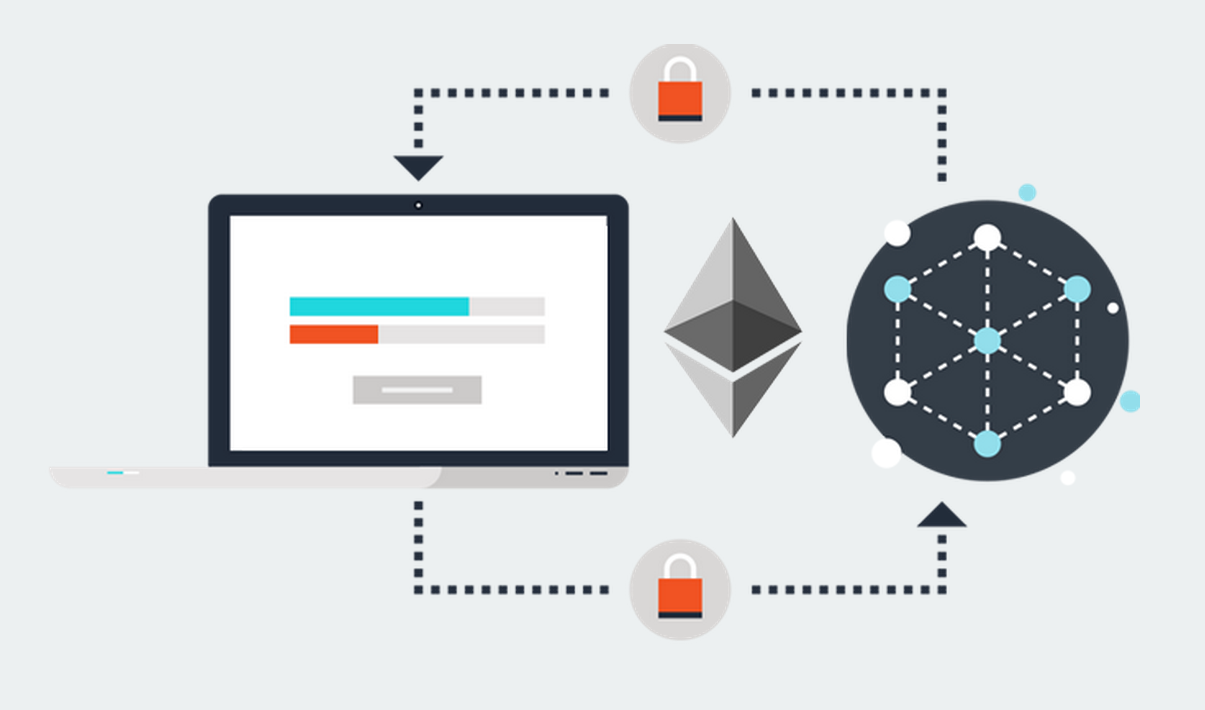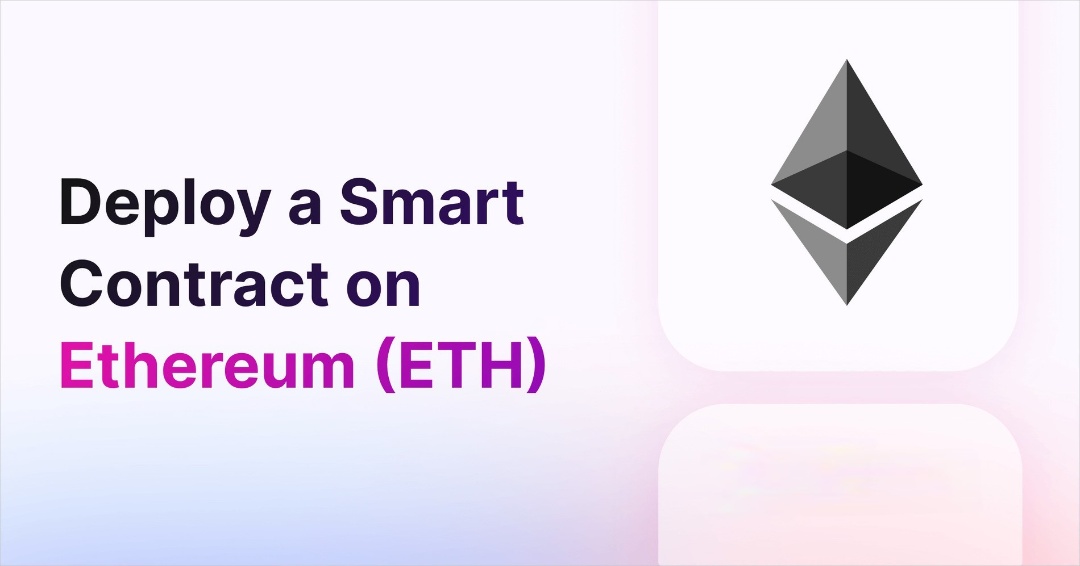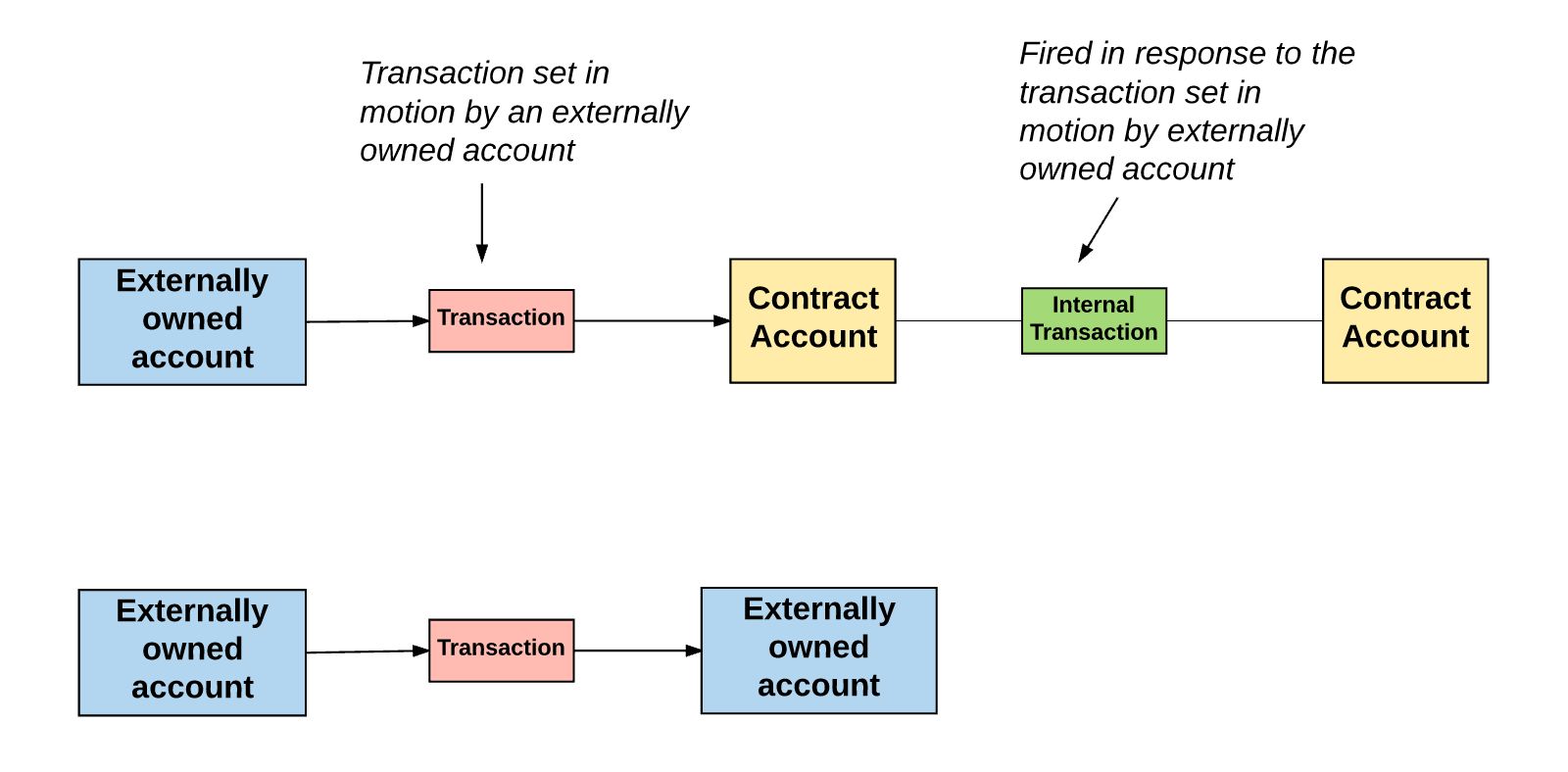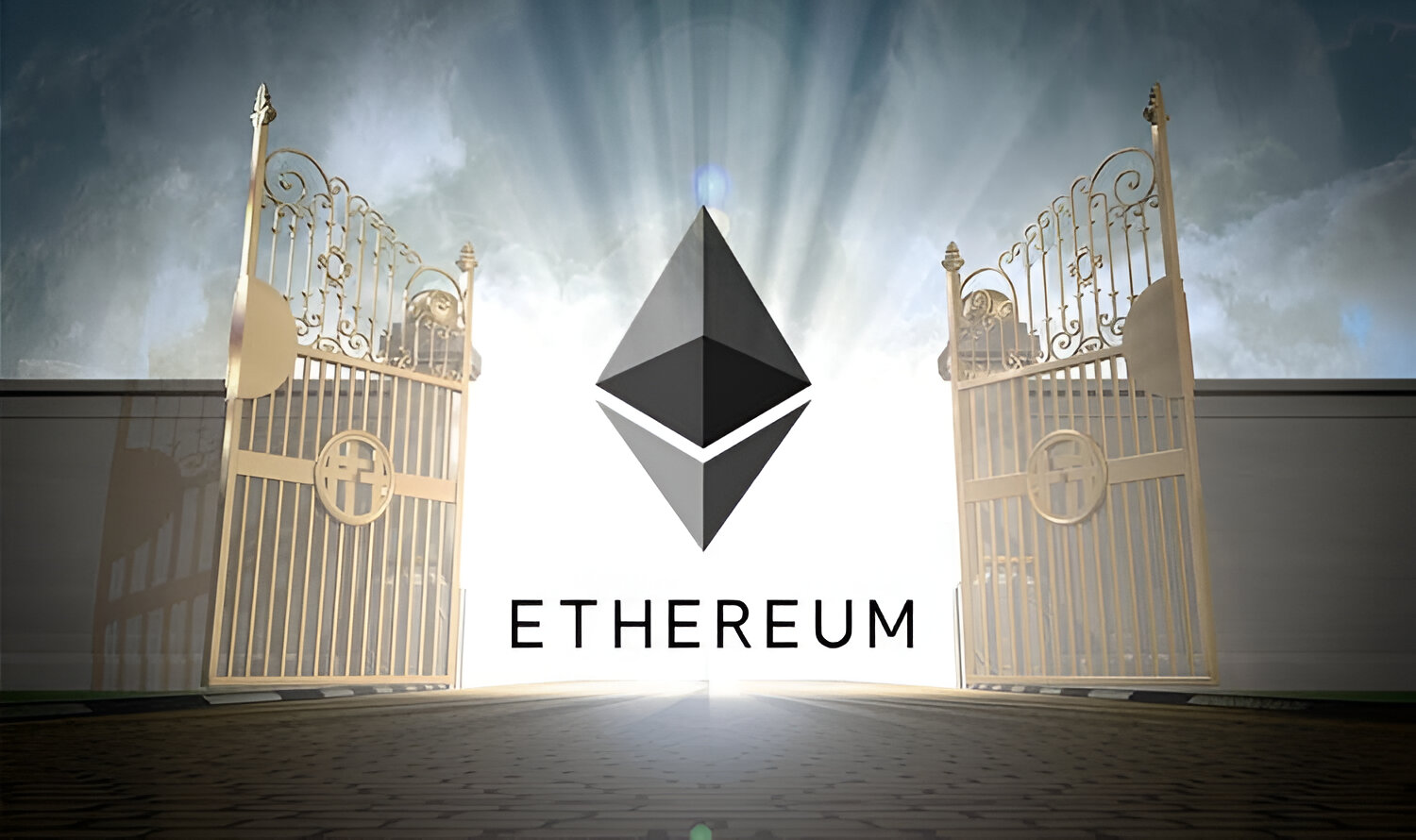Introduction
Welcome to the world of Ethereum, a revolutionary blockchain platform that allows developers to build decentralized applications (DApps) and execute smart contracts. Ethereum utilizes a cryptocurrency called Ether (ETH) and provides a secure and transparent environment for digital transactions.
In this article, we will explore the concept of smart contracts and learn how to write them on the Ethereum platform. Whether you are an experienced developer or just starting your journey in blockchain development, this guide will provide you with the necessary knowledge to get started with creating smart contracts on Ethereum.
Smart contracts are self-executing contracts with the terms of the agreement directly written into code. They automatically execute when predetermined conditions are met, eliminating the need for intermediaries and ensuring trust and transparency in transactions.
The use cases for smart contracts are vast and diverse. They can be used for crowdfunding, decentralized finance (DeFi), supply chain management, digital identity, and much more. By leveraging the power of blockchain technology, smart contracts provide unprecedented opportunities for innovation and disruption across various industries.
To write smart contracts on Ethereum, you will need to learn a programming language called Solidity. Solidity is a statically-typed programming language specifically designed for writing smart contracts on the Ethereum Virtual Machine (EVM). It shares similarities with JavaScript and C++, making it relatively easy for developers familiar with these languages to pick up.
Before diving into writing smart contracts, it is crucial to set up your Ethereum development environment. This typically involves installing the necessary software tools and configuring your development environment to interact with the Ethereum network. Once set up, you will have a sandboxed environment to test and deploy your smart contracts.
In the upcoming sections, we will walk through the process of writing a basic smart contract, compiling it, and deploying it onto the Ethereum network. We will also discuss best practices for writing secure and efficient smart contracts, as well as tips for debugging and testing your code.
Writing smart contracts on Ethereum is an exciting journey that opens up a world of possibilities. So, without further ado, let’s get started and embark on this adventure of decentralized application development with Ethereum smart contracts.
Getting started with Ethereum
Before diving into writing smart contracts on Ethereum, it’s essential to familiarize yourself with the basics of the Ethereum platform. Ethereum is a decentralized blockchain platform that enables the creation and execution of smart contracts.
To get started with Ethereum, you will need to understand the core components that make up the ecosystem:
- Ethereum Virtual Machine (EVM): The Ethereum Virtual Machine is a runtime environment where smart contracts are executed. It is responsible for processing and validating transactions on the Ethereum network.
- Blockchain: Ethereum utilizes a blockchain, similar to Bitcoin, to record and store transactional data. The Ethereum blockchain consists of a series of interconnected blocks, with each block containing a list of transactions.
- Ether (ETH): Ether is the native cryptocurrency of the Ethereum platform. It is used to pay for transaction fees and incentivize network participants, such as miners who validate and add new blocks to the blockchain.
- Gas: Gas is a unit used to measure the computational effort required to execute operations within the Ethereum network. Every operation in an Ethereum transaction consumes a specific amount of gas, and the sender must pay for the gas using Ether.
- Wallet: A wallet is a software or hardware tool that allows users to store, manage, and interact with their Ethereum accounts. Ethereum wallets enable users to send and receive Ether, as well as interact with smart contracts.
- Network: The Ethereum network consists of a global network of nodes that maintain and validate the blockchain. Nodes can be miners, which validate and add new blocks to the blockchain, or full nodes, which store and propagate the entire blockchain history.
To interact with the Ethereum network, you will need to choose a development framework or tool. Some popular choices include:
- Truffle: Truffle is a popular development framework that simplifies the process of creating, deploying, and testing smart contracts on Ethereum. It provides a suite of tools for development, testing, and deployment, along with a built-in testing environment.
- Remix: Remix is an online integrated development environment (IDE) specifically designed for writing, testing, and deploying smart contracts. It offers a user-friendly interface and supports various programming languages.
- Hardhat: Hardhat is a developer-focused Ethereum development environment that provides advanced debugging, testing, and deployment tools. It offers a powerful command-line interface (CLI) and integrates well with popular testing frameworks like Mocha and Chai.
Once you have selected a development framework or tool, you can start writing and deploying smart contracts on Ethereum. In the next section, we will delve into the concept of smart contracts and explore their benefits in more detail.
What are smart contracts?
Smart contracts are self-executing agreements with the terms of the contract directly written into code. They automatically execute actions and enforce the agreed-upon rules without the need for intermediaries, such as banks or legal systems.
Smart contracts operate on a blockchain platform, like Ethereum, where they are stored and executed in a decentralized manner. The decentralized nature of smart contracts ensures transparency, security, and immutability, making them highly reliable for a wide range of applications.
Unlike traditional contracts, smart contracts eliminate the need for trust between parties. Instead, trust is replaced by cryptographic algorithms and consensus mechanisms. Once a smart contract is deployed to the blockchain, it cannot be modified or tampered with, ensuring that all parties adhere to the agreed-upon terms.
Smart contracts are triggered when specific predefined conditions are met. These conditions can include a specific date and time, the fulfillment of certain requirements, or the occurrence of an external event. When the conditions are met, the smart contract automatically executes the specified actions, such as transferring funds, updating balances, or triggering notifications.
One of the key advantages of smart contracts is their ability to eliminate middlemen and reduce transaction costs. Since smart contracts operate on a decentralized network, there is no need for intermediaries to oversee the fulfillment of the contract. This reduces the costs associated with traditional contracts, which often require legal and administrative processes.
Smart contracts have a wide range of applications across industries. They can be used for financial transactions, supply chain management, insurance, voting systems, digital identity verification, and more. With smart contracts, complex business processes and agreements can be automated, streamlined, and executed with greater efficiency and security.
It is important to note that while smart contracts are powerful tools, they are not infallible. The code written for smart contracts needs to be thoroughly tested and audited to ensure its accuracy and security. Mistakes or vulnerabilities in the code can potentially lead to financial loss or exploitation. Therefore, it is crucial for developers to follow best practices and implement robust security measures when writing smart contracts.
Now that we have a basic understanding of what smart contracts are, let’s explore the advantages they offer in more detail in the next section.
Benefits of smart contracts
Smart contracts offer numerous advantages over traditional contracts and have the potential to revolutionize various industries and business processes. Here are some key benefits of smart contracts:
- Elimination of intermediaries: Smart contracts eliminate the need for intermediaries, such as banks or legal systems, to oversee and enforce contracts. This reduces costs and eliminates the potential for human error or bias.
- Transparency and immutability: Smart contracts operate on a blockchain platform, providing transparency and ensuring that the agreement terms are unalterable once deployed. This fosters trust between parties and eliminates disputes over contract execution.
- Automation and efficiency: Smart contracts automate the execution of agreed-upon actions, streamlining complex business processes and eliminating manual intervention. This increases efficiency, reduces processing time, and minimizes administrative costs.
- Reduced transaction costs: By eliminating intermediaries and reducing the need for third-party verification, smart contracts significantly reduce transaction costs. This is particularly beneficial for cross-border transactions and micropayments.
- Enhanced security: Smart contracts leverage cryptographic algorithms and decentralized networks, making them highly secure. Once deployed, smart contracts are tamper-proof, ensuring that the terms of the contract are upheld without the risk of fraud or unauthorized modifications.
- Faster settlement: Traditional contracts often involve lengthy processes for verification, negotiation, and settlement. Smart contracts expedite these processes by automating the execution of contract terms, leading to faster settlement times.
- Digitization of assets: Smart contracts enable the digitization of assets, such as property titles, patents, or intellectual property rights. This streamlines ownership transfers, simplifies asset management, and reduces the risk of loss or fraud.
- Auditability and accountability: The transparent nature of blockchain ensures that every transaction and action performed within a smart contract is recorded and immutable. This allows for easy auditing and provides a clear audit trail, increasing accountability and facilitating regulatory compliance.
These benefits highlight the transformative potential of smart contracts in various industries, ranging from finance and supply chain management to healthcare and legal sectors. However, it’s important to consider the challenges and limitations associated with smart contracts to ensure they are implemented effectively and with proper considerations.
In the next sections, we will delve into the technical aspects of writing smart contracts using the Solidity programming language and explore the necessary steps to set up an Ethereum development environment.
Understanding Solidity programming language
Solidity is a high-level programming language specifically designed for writing smart contracts on the Ethereum platform. It is statically-typed and supports various features, making it a powerful tool for creating decentralized applications (DApps) and executing smart contracts.
Here are some key aspects to understand about the Solidity programming language:
- Object-oriented: Solidity is an object-oriented programming language, allowing developers to define and create objects with their own properties and behaviors. This helps in structuring and organizing complex smart contract code.
- Smart contract-oriented: Solidity is specifically designed for writing smart contracts. It provides built-in constructs and functions that facilitate the execution of contract-specific operations, such as transferring funds, accessing contract state, and interacting with other contracts.
- Similarities to JavaScript: Solidity shares some similarities with JavaScript, making it easier for developers familiar with JavaScript to pick up. The syntax and control structures in Solidity resemble those in JavaScript, allowing for a smoother transition.
- Types and variables: Solidity supports various data types, including integers, booleans, strings, arrays, and structs. It also allows the declaration of state variables, local variables, and function parameters with explicit typing.
- Contract lifecycle: In Solidity, a contract has a lifecycle that includes a constructor function, which is run only once during contract deployment, and other functions that can be invoked by users and other contracts. Solidity provides modifiers and inheritance mechanisms to enhance code reusability and contract modularity.
- Error handling and exception handling: Solidity provides mechanisms for error handling and exception handling to ensure robustness and security. Developers can use assertions and error conditions to handle potential exceptions and failures within their smart contracts.
- External contract interaction: Solidity allows smart contracts to interact with other contracts on the Ethereum network. This facilitates the composition of complex decentralized applications that utilize multiple smart contracts to achieve their functionality.
Understanding Solidity is essential for effectively writing smart contracts on Ethereum. It is recommended to familiarize yourself with the Solidity documentation, which provides comprehensive details on the language features and best practices.
In the next section, we will explore the necessary steps to set up your Ethereum development environment, enabling you to start writing and deploying smart contracts.
Setting up the Ethereum development environment
Before you can start writing and deploying smart contracts on the Ethereum platform, you need to set up your development environment. This involves installing the necessary software tools and configuring your workspace to interact with the Ethereum network.
Here are the key steps to set up your Ethereum development environment:
- Install Node.js: Node.js is a JavaScript runtime that allows you to run JavaScript applications outside of a web browser. Ethereum development tools, such as Truffle and Hardhat, rely on Node.js. Visit the official Node.js website to download and install the latest version compatible with your operating system.
- Choose an Ethereum client: Ethereum clients enable you to connect to the Ethereum network and interact with it. Examples of popular Ethereum clients include Geth and Parity. Choose the client that best suits your needs and follow the installation instructions provided by the client’s documentation.
- Install development tools: There are several development tools available that simplify the process of writing, testing, and deploying smart contracts. Truffle and Hardhat are two popular choices among Ethereum developers. Install your preferred development tool globally using the Node Package Manager (npm) by running the appropriate command in your terminal.
- Configure your development environment: After installing the necessary tools, you need to configure your development environment. This typically involves specifying the Ethereum client you want to use, setting up network parameters, and managing accounts. Consult the documentation of your chosen development tool for instructions on how to configure your environment.
- Create a new project: Once your environment is set up, you can create a new project for your smart contract development. Use the command-line interface (CLI) provided by your development tool to create a new project structure. This will generate the necessary files and directories for your smart contract development.
- Write and compile your smart contracts: With your project set up, you can start writing your smart contracts using the Solidity programming language. Define your contract’s structure, variables, and functions according to your application’s requirements. Once your code is ready, use the development tool’s command to compile your smart contracts into bytecode, which can be executed on the Ethereum network.
- Deploy your smart contracts: After compiling your smart contracts, you can deploy them onto the Ethereum network. This involves choosing the appropriate network, such as the mainnet or a testnet, and executing the deployment command provided by your development tool. Deploying your contracts will assign them unique addresses on the blockchain, enabling other participants to interact with them.
Setting up your Ethereum development environment is a crucial step in preparing for smart contract development. Take the time to carefully follow the documentation and instructions provided by the development tools you choose to ensure a smooth setup process.
In the next section, we will dive into the process of writing your first smart contract using Solidity.
Writing your first smart contract
Now that you have your Ethereum development environment set up, it’s time to write your first smart contract using Solidity. This section will guide you through the process of creating a basic smart contract step by step.
Follow these steps to write your first smart contract:
- Create a new Solidity file: Start by creating a new file with the “.sol” extension, which indicates that it contains Solidity code. You can use a text editor or an integrated development environment (IDE) to create and edit this file.
- Declare the contract: Inside your Solidity file, declare the contract using the “contract” keyword, followed by the contract name. For example, you can create a contract called “MyContract”.
- Add state variables: State variables represent the contract’s persistent storage. Declare any necessary state variables within the contract. For example, you can declare a state variable called “myVariable” as an integer.
- Write the constructor: The constructor is a special function that is called once during contract deployment and allows you to initialize the contract’s state. Write a constructor function within the contract, if needed.
- Implement functions: Define functions within the contract to specify the behavior and actions the contract can execute. For example, you can create a function called “setMyVariable” to update the value of “myVariable”.
- Compile the smart contract: Use your Ethereum development tool’s command to compile the smart contract. This step ensures that the syntax of your code is correct and generates the smart contract’s bytecode for deployment.
Here’s an example of a simple smart contract written in Solidity:
pragma solidity ^0.8.0;
contract MyContract {
uint256 myVariable;
constructor() {
myVariable = 5;
}
function setMyVariable(uint256 newValue) public {
myVariable = newValue;
}
}
In this example, the contract “MyContract” has a state variable called “myVariable” and a constructor that sets its initial value to 5. It also has a function called “setMyVariable” which allows you to update the value of “myVariable” to a new value passed as an argument to the function.
Once you have written your smart contract, compile it using your chosen Ethereum development tool’s command. This step ensures that your contract is free of syntax errors and is ready to be deployed.
In the next section, we will explore the process of compiling and deploying your smart contract onto the Ethereum network.
Compiling and deploying the smart contract
After writing your smart contract in Solidity, the next step is to compile and deploy it onto the Ethereum network. This section will guide you through the process of compiling your smart contract code and deploying it to the blockchain.
Follow these steps to compile and deploy your smart contract:
- Compile the smart contract: Use your Ethereum development tool’s compiling command to compile your smart contract code. This step checks for syntax errors and generates the compiled bytecode, which can be executed on the Ethereum Virtual Machine (EVM).
- Select the deployment network: Decide which Ethereum network you want to deploy your smart contract to. You can choose from the mainnet, which represents the live Ethereum network, or various testnets, such as Ropsten, Rinkeby, or Kovan, for testing and development purposes.
- Set up your deployment configuration: Configure your Ethereum development tool to connect to the chosen deployment network. This typically involves specifying the network’s endpoint URL, account credentials, and other necessary parameters.
- Deploy the smart contract: Use your Ethereum development tool’s deployment command to deploy the compiled smart contract onto the chosen network. This process involves submitting a transaction that includes the bytecode of your smart contract to the network for execution and mining.
- Interact with the deployed smart contract: Once your smart contract is deployed, it is assigned a unique address on the blockchain. You can use this address to interact with the smart contract, calling its functions and accessing its state variables. This can be done through your Ethereum development tool’s command-line interface or by building a user interface to interact with the smart contract.
It’s important to note that deploying a smart contract to the Ethereum network incurs transaction fees known as gas fees. These fees are paid in Ether and cover the computational resources required to execute the deployment transaction and store your smart contract on the blockchain.
Ensure that you have sufficient Ether in your deployment account to cover the gas fees. You can obtain Ether from cryptocurrency exchanges or testnet faucets, depending on the network you are deploying to.
By following these steps, you can compile and deploy your smart contract onto the Ethereum network, making it accessible for execution and interaction by other participants on the blockchain.
In the next section, we will explore how to interact with deployed smart contracts in order to execute their functions and access their data.
Interacting with smart contracts
Once you have deployed your smart contract on the Ethereum network, you can interact with it by calling its functions and accessing its state variables. This section will guide you through the process of interacting with a deployed smart contract.
Here’s how you can interact with a smart contract:
- Obtain the smart contract’s address: The first step in interacting with a deployed smart contract is to obtain its address on the blockchain. This address uniquely identifies the smart contract and allows other participants to interact with it.
- Create an instance of the smart contract: In your development environment, create an instance of the smart contract using its address. This instance acts as a proxy that allows you to interact with the deployed contract through function calls.
- Execute functions: Once you have an instance of the smart contract, you can call its functions. You need to specify the function you want to call and provide any required arguments. The Ethereum development tool or library you are using will have specific methods for executing these functions.
- Access state variables: You can also access the state variables of the smart contract to retrieve their values. State variables store the data of the contract and can be read or modified through appropriate getter and setter functions defined in the contract.
- Handle transaction and gas fees: Every interaction with a smart contract on the Ethereum network incurs fees in the form of gas. Gas fees are paid in Ether and cover the computational resources required to execute the function call or state variable access. Make sure you have sufficient Ether to cover the gas fees associated with your interactions.
Interacting with smart contracts can be done through the command-line interface of your Ethereum development tool or by building a user interface that facilitates the interaction. User interfaces can be web-based applications, mobile apps, or any other interface that can connect to the Ethereum network and communicate with the smart contract.
By interacting with smart contracts, you can execute desired actions, retrieve data, and participate in decentralized applications built on the Ethereum platform. This brings the power of decentralized, transparent, and trustless execution to various use cases, ranging from financial applications to supply chain management and beyond.
In the next section, we will discuss important security considerations when writing and deploying smart contracts.
Security considerations for smart contracts
When writing and deploying smart contracts on the Ethereum platform, it is essential to take into account various security considerations. Smart contracts execute automatically and can handle valuable assets, making them an attractive target for attackers. This section will explore some key security considerations to keep in mind:
- Auditing and code review: Thoroughly audit and review your smart contract code. Look for potential vulnerabilities, logic flaws, and attack vectors. It is highly recommended to seek third-party audits to ensure the robustness, reliability, and security of your smart contract code.
- Secure coding practices: Follow secure coding practices and adhere to best practices for smart contract development. Use safe math libraries to avoid integer overflow and underflow vulnerabilities. Implement access control mechanisms to prevent unauthorized access to critical functions and data. Validate inputs and handle exceptions and errors appropriately.
- Transaction ordering and reentrancy: Be aware of the possibility of transaction ordering attacks and reentrancy attacks. Ensure that the state changes within your contract are properly ordered, and integrate checks to prevent reentrant attacks where an attacker repeatedly calls a vulnerable contract to drain funds or manipulate the contract’s state.
- External dependencies: If your smart contract interacts with external contracts or libraries, thoroughly assess their security and trustworthiness. Be cautious when integrating external code, as vulnerabilities in these dependencies can indirectly impact the security of your smart contract.
- Gas optimization: Consider gas optimization techniques to reduce the cost of executing your smart contract. Avoid unnecessary computations, loops with unbounded iterations, and excessive storage usage, as these can lead to high gas consumption, potentially resulting in failed or costly transactions.
- Upgradeability: If you plan for upgradability in your smart contract design, ensure that the upgrade process is secure. Implement appropriate mechanisms, such as administrative permissions or proxy contracts, to control and validate contract upgrades to prevent unauthorized or malicious changes.
- Ethereum network considerations: Be aware of the limitations and characteristics of the Ethereum network. Understand the potential risks of front-running attacks, denial-of-service attacks, and other network-related vulnerabilities. Stay up to date with the latest network upgrades and best practices to mitigate these risks.
Security is a continuous process, and it’s important to remain vigilant even after your smart contract is deployed. Monitor the blockchain for any unusual or suspicious activities related to your contract, and be prepared to respond to any potential security incidents promptly.
By following these security considerations and best practices, you can enhance the resilience and integrity of your smart contracts and protect the assets and interests of both users and developers.
In the next section, we will discuss best practices for writing smart contracts, which complement the security considerations mentioned here.
Best practices for writing smart contracts
When writing smart contracts on the Ethereum platform, it is important to follow best practices to ensure the code’s efficiency, security, and maintainability. By adhering to these practices, you can enhance the reliability and robustness of your smart contracts. This section will cover some key best practices for writing smart contracts:
- Modularity and reusability: Design your smart contracts in a modular and reusable manner. Break down complex logic into separate functions and contracts to improve code readability and facilitate code reuse. This also allows for easier upgrading and maintenance in the future.
- Code documentation: Document your smart contract code thoroughly to enhance readability and ease of understanding. Use comments to explain the purpose of functions, variables, and important code segments. Document the contract’s overall structure, its intended usage, and any external dependencies.
- Consistent naming conventions: Follow consistent naming conventions for functions, variables, and events in your smart contracts. Use descriptive names that accurately convey their purpose and avoid ambiguous or generic names. This improves code readability and maintainability.
- Error handling and exceptions: Implement proper error handling and exception handling mechanisms in your smart contracts. Include appropriate assertions and require statements to validate inputs and handle exceptional conditions to prevent unexpected behavior and vulnerabilities.
- Gas optimization: Optimize your smart contract code for gas consumption. Minimize unnecessary computations, loop iterations, and storage operations to reduce the cost of executing transactions on the Ethereum network. This enhances the efficiency and affordability of your contract.
- Thorough testing: Test your smart contracts rigorously to ensure their correctness and robustness. Write unit tests and integration tests to cover different scenarios and edge cases. Consider using testing frameworks like Truffle or Hardhat and simulate various test scenarios to catch any potential bugs or vulnerabilities.
- Security audits: Engage in third-party security audits to identify and address potential vulnerabilities in your smart contract code. Experienced auditors can provide valuable insights and recommendations to enhance the overall security of your contracts.
- Continuous monitoring and upgrading: Continuously monitor the performance and behavior of your deployed smart contracts. Stay informed about security updates, network upgrades, and best practices in the Ethereum ecosystem. Be prepared to upgrade your contracts if necessary to address potential vulnerabilities or to introduce new features.
Following these best practices can significantly enhance the quality and reliability of your smart contracts. It is crucial to prioritize security, efficiency, and maintainability throughout the development lifecycle.
Remember that writing smart contracts is an iterative process, and incorporating feedback, learning from past mistakes, and staying updated with the latest advancements in smart contract development will help you continually improve your skills and deliver high-quality contracts.
In the next section, we will discuss some valuable tips for debugging and testing smart contracts.
Tips for debugging and testing smart contracts
Debugging and testing are critical stages in the development lifecycle of smart contracts. Thorough testing ensures that your contracts function as intended and are free from vulnerabilities. This section provides some valuable tips to help you effectively debug and test your smart contracts:
- Use logging and event emission: Incorporate logging statements and emit events at crucial points in your smart contract code. Logging allows you to track the flow of execution and record variable values, making it easier to identify and diagnose issues during debugging.
- Write comprehensive test cases: Develop a comprehensive suite of test cases to cover different scenarios and edge cases. Include both positive and negative test cases to ensure that your smart contracts handle various inputs and conditions correctly. Test for boundary conditions, exceptions, and different user roles or access levels.
- Simulate different network conditions: Test your smart contracts under different network conditions, such as high load, low gas availability, or network congestion. This helps identify potential performance bottlenecks and ensures that your contracts operate efficiently and reliably in real-world scenarios.
- Embrace test-driven development (TDD): Practice test-driven development by writing tests first before implementing the actual smart contract code. This approach helps you define the expected behavior of your contract, guides your implementation, and ensures that your code meets the specified requirements.
- Use dedicated testing frameworks: Leverage dedicated testing frameworks such as Truffle, Hardhat, or Ganache. These frameworks provide powerful tools and utilities specifically designed for smart contract testing, including automated testing, ganache-cli for local test networks, and contract interaction utilities.
- Test with real-world scenarios: Simulate real-world scenarios and user interactions in your test cases to ensure that your contracts behave as expected in practical environments. Consider integration testing with external systems, such as oracles or other smart contracts, to verify seamless interaction and data exchange.
- Perform code reviews: Engage peers or experienced developers to conduct code reviews of your smart contract code. Fresh perspectives can help identify potential issues or vulnerabilities that you may have overlooked. Peer code reviews promote code quality and contribute to building more secure and reliable contracts.
- Use debugging tools: Leverage debugging tools provided by your Ethereum development framework or IDE. These tools allow you to set breakpoints, step through your contract’s execution, inspect variable values, and analyze the flow of your code. This aids in identifying and resolving any logic or runtime errors.
- Stay updated with best practices: Stay up to date with the evolving best practices and recommendations for smart contract testing and debugging. Follow relevant resources, online communities, and security advisories to remain informed about the latest advancements in smart contract testing methodologies.
By implementing these tips and techniques, you can ensure that your smart contracts are thoroughly tested, robust, and secure. Remember that testing and debugging are iterative processes, and maintaining a rigorous testing approach throughout the development lifecycle will help you deliver high-quality smart contracts.
In the next section, we will discuss common pitfalls to avoid when writing smart contracts.
Common pitfalls to avoid when writing smart contracts
When writing smart contracts, it’s important to be aware of potential pitfalls that can lead to vulnerabilities, inefficiencies, or unintended behavior. By understanding these common pitfalls and taking preventative measures, you can enhance the quality and security of your smart contracts. This section highlights some common pitfalls to avoid:
- Unchecked external calls: Be cautious when making external calls to other contracts. Ensure that you validate and handle the return values and potential exceptions to prevent unexpected behavior or security vulnerabilities.
- Integer arithmetic vulnerabilities: Exercise caution when performing arithmetic operations with integers. Avoid unchecked mathematical operations that can result in integer overflow or underflow. Utilize safe math libraries or implement appropriate checks to prevent such vulnerabilities.
- Insecure access control: Be mindful of access control vulnerabilities. Implement proper access control mechanisms to restrict sensitive functions or data to authorized entities. Avoid relying solely on the visibility modifiers (e.g., “public” or “private”) for access control.
- Excessive gas consumption: Optimize your smart contract’s gas usage to prevent excessive gas costs or failed transactions. Minimize unnecessary computations, avoid excessive storage operations, and use gas-efficient coding techniques to improve the contract’s efficiency.
- Reentrancy vulnerabilities: Be cautious of reentrancy vulnerabilities, where external contracts can maliciously invoke vulnerable functions repeatedly to exploit your contract’s state. Implement checks and proper state management to prevent such attacks.
- Insufficient input validation: Validate and sanitize all user-provided inputs thoroughly. Failing to do so can result in unauthorized actions, unexpected behaviors, or security vulnerabilities such as denial-of-service attacks or data corruption.
- Dependence on external contracts: Consider the reliability and security of external contracts that your contract interacts with. Be cautious about potential changes or vulnerabilities in these dependencies that can impact your contract’s functionality or security.
- Failure to handle failure cases: Account for potential failure scenarios and exceptions in your smart contract logic. Implement appropriate error handling and exception handling mechanisms to prevent contract execution failures or unexpected contract states.
- Ignoring gas limits: Ensure that your smart contracts can handle the gas limits imposed by the Ethereum network. Failure to do so can result in transactions being reverted or failing to execute. Design your contracts to be gas-efficient and respect gas limits imposed by the network.
- Insufficient testing: Neglecting thorough testing can leave your smart contracts vulnerable to bugs, logic flaws, or unexpected behavior. Invest time and effort into designing and executing comprehensive test cases to identify and rectify any issues before deployment.
By being mindful of these common pitfalls and adopting good development practices, you can minimize the chances of encountering vulnerabilities, ensuring the security, efficiency, and reliability of your smart contracts.
In the next section, we will provide you with resources for further learning and exploration in the field of smart contract development on Ethereum.
Resources for further learning and exploration
If you’re interested in learning more about smart contract development on the Ethereum platform, there are numerous resources available to help you expand your knowledge and skills. Whether you’re a beginner or an experienced developer, these resources can provide valuable insights and guidance. Here are some recommended resources:
- Official Ethereum documentation: The official Ethereum documentation is a comprehensive resource that covers all aspects of Ethereum, including smart contract development. It provides in-depth explanations, tutorials, and examples to help you understand and utilize the Ethereum platform effectively.
- Solidity documentation: The Solidity documentation is the official resource for learning the Solidity programming language used for writing smart contracts on Ethereum. It offers a detailed explanation of the language features, syntax, best practices, and examples to help you master Solidity.
- Online tutorials and courses: Online platforms such as Udemy, Coursera, and Ethereum.org offer a variety of tutorials and courses focused on smart contract development. These resources provide structured learning paths, hands-on exercises, and real-world projects to enhance your practical knowledge.
- Community forums and developer communities: Engaging with the Ethereum developer community can be immensely helpful for learning and staying up-to-date. Participate in forums such as Ethereum Stack Exchange and Ethereum Community Forum to ask questions, share knowledge, and connect with other developers.
- Books and publications: There are several books and publications available that delve into smart contract development on Ethereum. Some recommended titles include “Mastering Ethereum” by Andreas M. Antonopoulos and Gavin Wood, “Smart Contracts: Building Blocks for Digital Markets” by Nick Szabo, and “Building Ethereum Dapps” by Roberto Infante.
- Open-source projects and code repositories: Explore open-source projects and code repositories on platforms like GitHub. Analyzing well-written smart contract code can provide insights into best practices, design patterns, and real-world use cases.
- Blockchain conferences and events: Attend blockchain conferences and events focused on Ethereum and smart contract development. These gatherings offer opportunities to network with industry experts, participate in workshops, and gain exposure to the latest advancements in the field.
Remember that the blockchain space is evolving rapidly, so it’s important to stay updated with the latest developments and best practices. Continually learning, exploring, and experimenting with smart contract development will help you deepen your understanding and improve your skills.
By utilizing these resources and actively engaging with the Ethereum developer community, you can embark on an enriching journey of learning and exploration in the world of smart contract development.

























